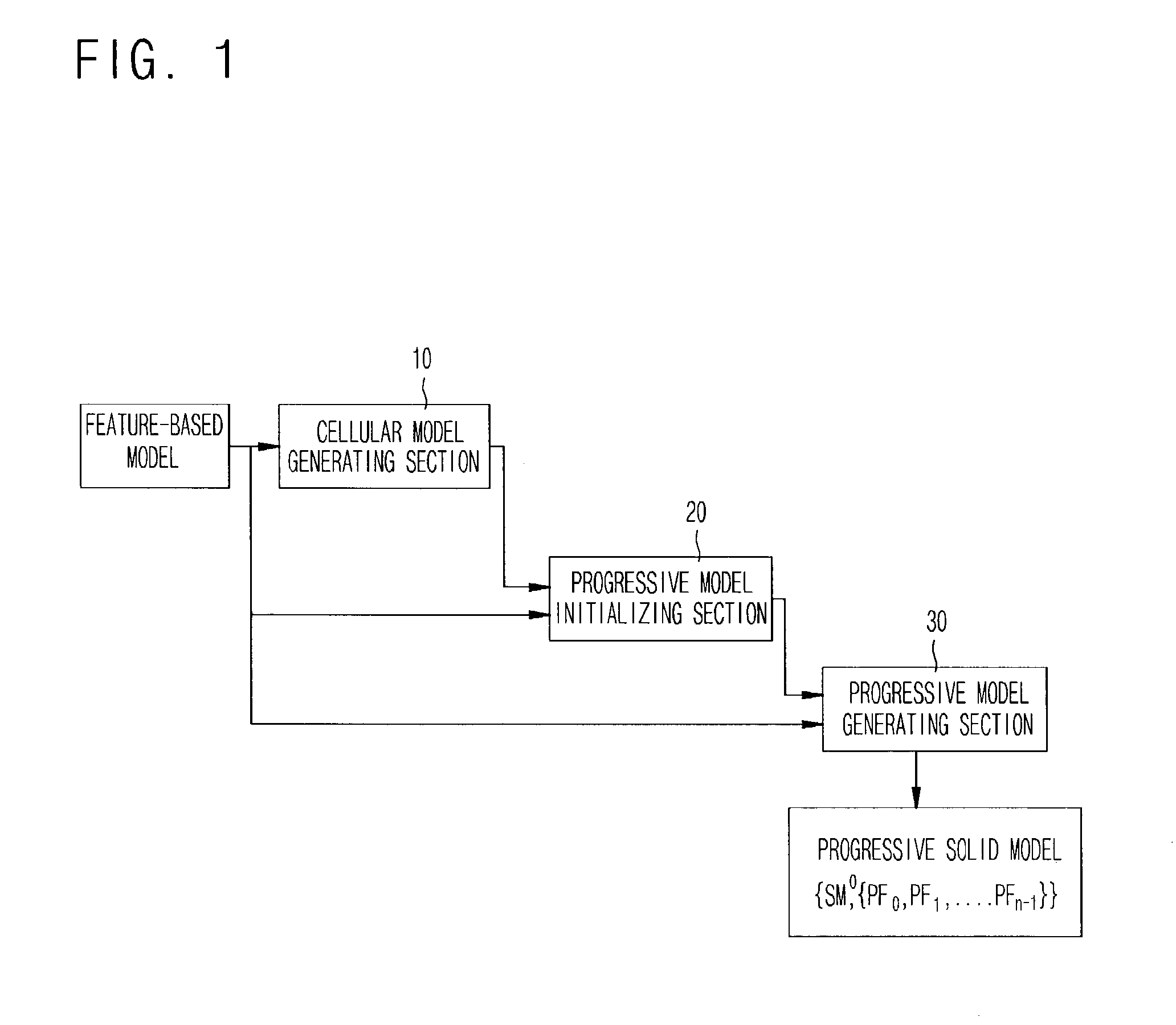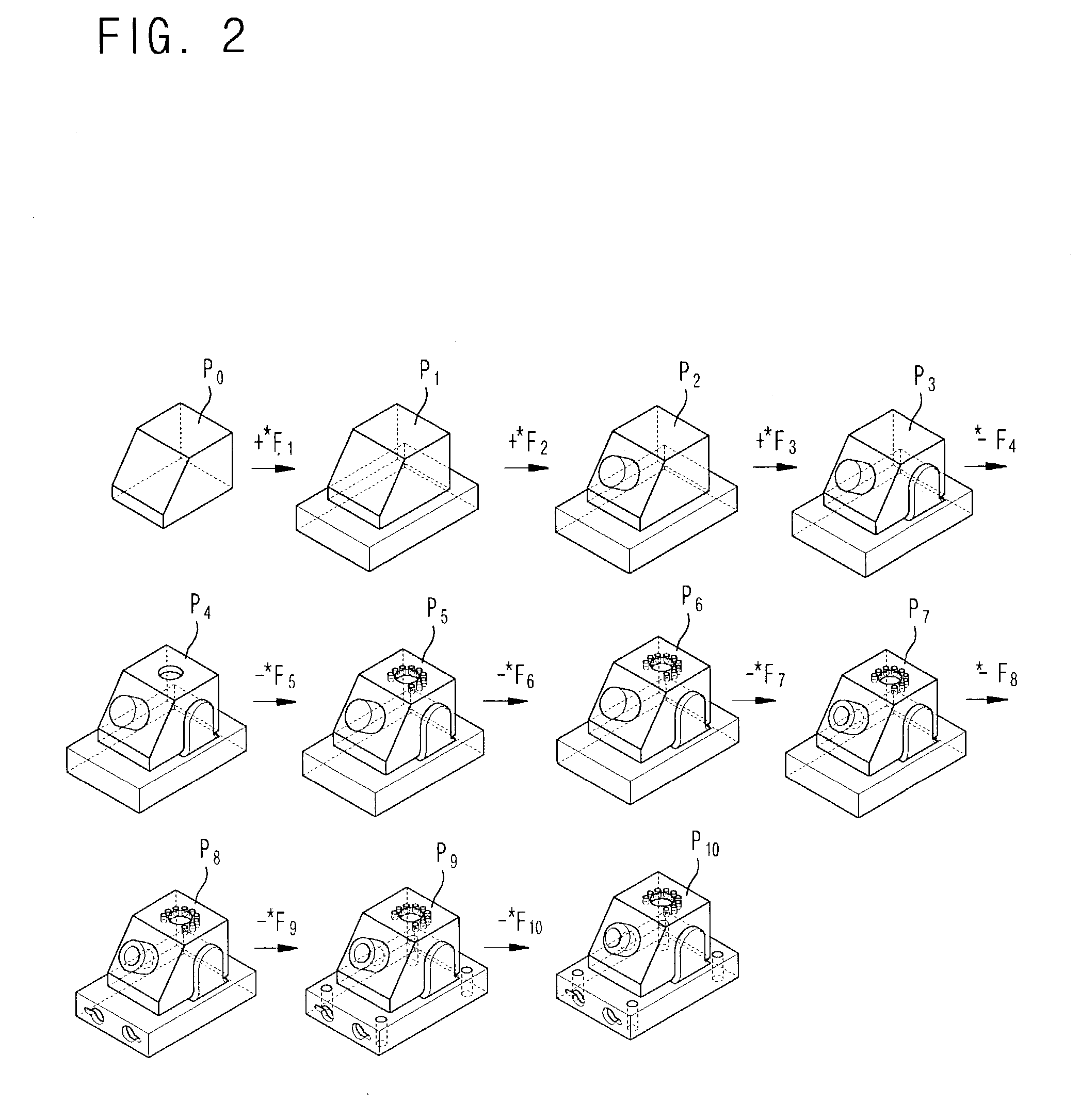Method for generating progressive solid models based on cellular topology
a solid model and topology technology, applied in static indicating devices, instruments, analogue processes for specific applications, etc., can solve the problems of high storage cost, transmission cost, and the problem of sharing and interchanging solid models over the network, and achieve the effect of effective sharing and transmission of models
- Summary
- Abstract
- Description
- Claims
- Application Information
AI Technical Summary
Problems solved by technology
Method used
Image
Examples
Embodiment Construction
[0026]A preferred embodiment according to the present invention will now be explained with respect to the accompanying drawings.
[0027]Referring to FIG. 1, if a specific feature-based model is inputted to a cellular model generating section 10, the section 10 performs a mapping operation on the input feature-based model considering an internal feature library, thereby generating a feature-based cellular topology model.
[0028]A progressive model initializing section 20 composes cells by use of volume attributes of the cells according to the relationship between the input feature-based model and the cells obtained from the cellular topology model to generate an initial cellular model SM0 which is simplified to generate a progressive solid model, and further searches n delta volumes DVi transiting the initial cellular topology model SM0 by composing and decomposing the cells so as to progressively complement the difference between the initial cellular topology model SM0 and the input fea...
PUM
 Login to View More
Login to View More Abstract
Description
Claims
Application Information
 Login to View More
Login to View More - R&D
- Intellectual Property
- Life Sciences
- Materials
- Tech Scout
- Unparalleled Data Quality
- Higher Quality Content
- 60% Fewer Hallucinations
Browse by: Latest US Patents, China's latest patents, Technical Efficacy Thesaurus, Application Domain, Technology Topic, Popular Technical Reports.
© 2025 PatSnap. All rights reserved.Legal|Privacy policy|Modern Slavery Act Transparency Statement|Sitemap|About US| Contact US: help@patsnap.com



